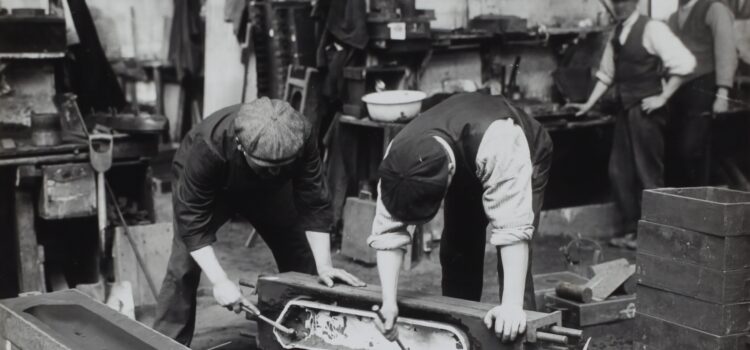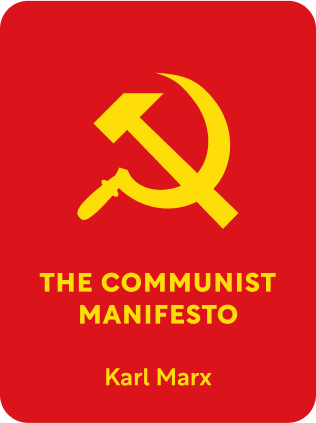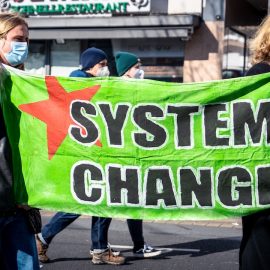

This article is an excerpt from the Shortform summary of "The Communist Manifesto" by Karl Marx. Shortform has the world's best summaries of books you should be reading.
Like this article? Sign up for a free trial here .
What is the role of Marxism’s bourgeoisie and proletariat classes in The Communist Manifesto? How do the two classes differ?
In Marxism, the bourgeoisie and proletariat are the two major classes that participate in the class struggle. The bourgeoisie own and hoard wealth and resources, while the proletariat are the laborers that make this possible. Communism is a system in which the proletariat would have control of resources they work for, instead.
Read more about Marxism, the bourgeoisie and proletariat, and their role in Communism.
Marxism: The Bourgeoisie and the Proletariat
Read about how in Marxism, the Bourgeoisie and the Proletariat are define in The Communist Manifesto, and the results of the bourgeoisie vs proletariat.
Bourgeoisie
In Marxism, the Bourgeoisie and Proletariat both play important roles. We’ll start by discussing the Bourgeoisie class since their development led to the development of the Proletariat. The Bourgeoisie employ laborers and own private property and businesses such as factories.
The Bourgeoisie class developed during feudal times. Two things contributed to their development:
- Changes to production. In earlier times, guilds controlled industry. As markets expanded (partly due to the discovery of America and the rounding of the Horn), however, the guilds couldn’t keep up and were replaced by the manufacturing system. The owners of the manufacturing system became wealthy and eventually became the Bourgeoisie.
- Increased political power. Changes to economic structures drive changes in social structures. The Bourgeoisie used their money to win political power. Though the government still existed, its role became catering to the Bourgeoisie.
When the Bourgeoisie became the ruling class, several social structures changed. The Bourgeoisie:
- Eliminated traditional relationships between classes (such as the awe worshippers felt for religious leaders) and made all dealings money-related.
- Implemented Free Trade, a system in which the government doesn’t interfere in the selling or buying of goods from any territory.
- Openly exploited other classes, as opposed to the less obvious political or religious exploitation between classes in the past.
- Destroyed old national industries and replaced them with new, global industries, creating demand for exotic products. (For example, people previously working as farmers now had the new option to make goods in factories.) Nations became dependent on each other and shared goods and ideas.
- Forced all nations to start improving production, or else fall behind and cease to exist.
- Concentrated the population in cities (where industries are located) and made rural areas dependent on towns. Similarly, developing countries became dependent on more advanced ones.
- Changed production further. New modes of production made better use of machines and broke work down into smaller and more repetitive tasks. As a result, jobs no longer required skill and anyone could do them, including women and children. The Bourgeoisie changed production more in 100 years than the combined efforts of all the classes before them.
All of the changes the Bourgeoisie ushered in created an unsustainable social system. The Bourgeoisie can only continue to exist by constantly improving production and growing the market. To do this, they take advantage of laborers, find new markets, and more thoroughly exploit old markets. All of this will only make future crises worse. Additionally, they have created a class that will ultimately bring about their downfall—the Proletariat. In Marxism, the Bourgeoisie and Proletariat will clash, and the Proletariat will take over. Here’s more about the Bourgeoisie vs the Proletariat.
The Proletariat
The Proletariat is made up of people who sell their labor for wages. These wages aren’t equal to the value of the work they produce. For example, if laborers build tables for a bourgeois company, the company will sell the tables for far more than what it paid for the materials and labor.
In the eyes of the Bourgeoisie, Proletariat laborers are simply a commodity—they exist only to work and increase capital. They only need to be paid the minimum amount of money necessary for survival. The majority of people are members of the Proletariat.
The Proletariat class came into being as the Bourgeoisie class developed industry and required laborers. In Marxism, the Bourgeoisie and Proletariat will clash, the Proletariat will revolt, and overthrow the Bourgeoisie and there will be only one class. That progression will look something like this:
- Initially, the Proletariat is scattered, disorganized, and competitive. Individual members of the Proletariat or small groups might rebel against the individual Bourgeoisie (such as an exploitative factory owner) and destroy machinery, factories, and products. However, this revolution is small-scale. Members of the Proletariat are still competing against each other for jobs and wages.
- As industry develops further, more members of the Proletariat are created. Members of the lower middle class, such as tradespeople, eventually fall into the working class. They don’t make enough money to compete with the bourgeoisie, and their specialized skills are no longer needed because new production methods can replace them. As these classes are dropped into the Proletariat, they bring new ideas and progress.
- The Proletariat is concentrated in locations where there are factories and jobs.
- Wages go down and everyone becomes poor. At this point, workers start creating unions and fighting the Bourgeoisie as a class.
- The workers might win some of these conflicts here and there, but the real victory is that they learn how to communicate with other Proletariat in different locations. To overthrow the Bourgeoisie, the entire Proletariat needs to band together and acquire political power by organizing into a party.
- The workers are constantly threatening this organization by competing among themselves. However, each time there’s a step backward, the movement recovers.
- Old society class collisions help develop the Proletariat further. The Bourgeoisie are competing with the aristocracy and other Bourgeoisie. To compete with these powers and further their own agenda, the Bourgeoisie seeks help from the Proletariat by giving them political power. The Proletariat can then use this power to fight the Bourgeoisie itself.
- Certain members of the Bourgeoisie decide to join the Proletariat as the final struggle nears and they realize the Proletariat will be the future.
- The Proletariat overthrows the Bourgeoisie.
The bourgeoisie vs proletariat is a clash Karl Marx anticipated. This revolt appeared inevitable in the class struggle.

———End of Preview———
Like what you just read? Read the rest of the world's best summary of Karl Marx's "The Communist Manifesto" at Shortform .
Here's what you'll find in our full The Communist Manifesto summary :
- How the oppressors and the oppressed have been in conflict for all of human history
- How the communists planned to overthrow the ruling class and put in place a fairer system for all
- Five key criticisms of Communism, and how Communists respond






